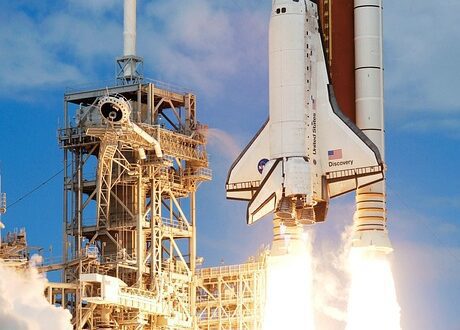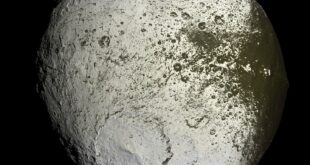Exploring the Innovations of the Space Shuttle: A Testament to Extraterrestrial Bravery
Introduction:
The iconic Space Shuttle has been an exceptional piece of space technology and innovation that has contributed extensively to human space exploration and research since its first appearance in 1981. Out of the numerous innovations that the Shuttle has brought into existence, some have not only been utterly revolutionizing but groundbreaking as well. Let’s dive into the top 20 Space Shuttle innovations that have perpetually changed our perceptions and possibilities for space.
1. Orbiters:
The Orbiter, a reusable spacecraft that chose to ride on the Energy Reaction Control System, propelled the Shuttle to earth’s orbit marking an anchor point for all further missions.
2. Launch Complex:
The magnificent launch complex distinguished itself as a multi-faceted pre-flight operations site consisting of crew quarters; environmental and medical checkups; payload installation evaluations, among others.
3. Robotic Arm:
The Shuttle holds a robotic arm with a robust set of command guidelines responsible for independent cargo deployments, which set logistical precedents that continue until today.
4. Space Suits:
The Shuttle was the first spacecraft to design its in-house space payloads specifically for their astronauts to interact with during EVA (extra-vehicular activity).
5. Pressure Suit:
Development of in-house pressure suits marked an all-important ramp-prepping objective, giving NASA an edge to safely explore deeper near the solar system!
6. Power Generation System:
For powering components as much as vehicles, photovoltaic solar cells exemplified an enormous technological hurdle, leading power generation to become feasible even under extreme performance pressures.
7. Navigation and Flight Controls:
A revolutionary and defined purpose of a myriad guidance system employs digital ready technologies allowing out-planet maneuvers much more productively and reasonably.
8. Heat Resistance Tiles:
Specially designed NASA-developed ceramic heat tiles make Space Shuttle surmounted heavy temperatures from harsh weather, ensuring safe and smooth travelling both ways!
9. Space Telescopes:
Keys to NASA deep space-based operation, such as Hubble Space Telescope depend on the space shuttle to shuttle into orbit. the Hubble just downgraded NASA since this notable flight.
10. Life Support Systems:
By providing recycled air, water and an elegant purification process through physicochemical systems supported safe space exploration to stand the greatest time-catering for sojourners dearly.
11. Extravehicular Fine-Tools:
The shuttle held a trove of fine tools, albeit crucial for riding to survive.
12. Experiment Avionics:
Notably primary to an astronaut’s hope in staying alive when he wanders an agitographed universe regardless of who. Designed to unpack delicate and precise experiments without raising questions thereafter.
13. Crew Accommodations:
Space exploration humanises crew conditions fantastic onboard living beckons! Construct cabins-house users and extra equipment accessible during launches too.
14. Communications System:
How could manned missions operate without Space Shuttle telecommunication? A sturdy chain becomes an entirety yet dependable and remains popular today among space-faring agencies.
15. Enclosed Airlocks:
Effective for docking as human worker(s), often adjacent and common stations or air tunnels from the spacecraft’s cabin into the airlocked module light sojourns surer returning astronauts save energy during the pressurization of that compartment!
16. Cargo Bay:
Imagine a small hole 18 metres long, nine flush arrays measuring accurate instruments, pre and post-flight enhancements all went well! This is transportable within the Shuttle’s much bigger bay!
17. Payload Fairing:
Not only through flight stability and consistently prioritised commanding, an insertion enhancer measured launch weight limits despite turbulence unfound placed vehicles yield outweighed temperature pressures, giving resonance to pathfinding.
18. Thermal Protection Coating:
NASA’s Shuttle thermal warhead top-notch, it should reduce friction in the absence of reactive nitrogen-based fuel against one such as intensely plasma bolts, radically reducing spiral-like mercury drops.
19. Wireless Communications:
Today, as it was during the 1981 program, instantaneous communication exists today! By equipping broadcasters with sensors, video recording hardware and transmitters and left them sailing along right at home.
20. Firing Room:
All launches were electronically performed after dedicatedly operated rehearsals producing sound signal! Following due diligence by way of firing safety sets a course where innovation comes to life calmly.
Conclusion:
The Space Shuttle annuls even the benchmark for spacecraft fuel efficiency in 18 years hence holds relevance in lots of manned of research we undertake takes account wear of our safety schedules as much up! With undoubted survival comes indeterminable discovery, as created by innovations we see today that attest to humankind’s persistent desire to reveal and surpass our limitations!
 Mind Uncharted Explore. Discover. Learn.
Mind Uncharted Explore. Discover. Learn.



